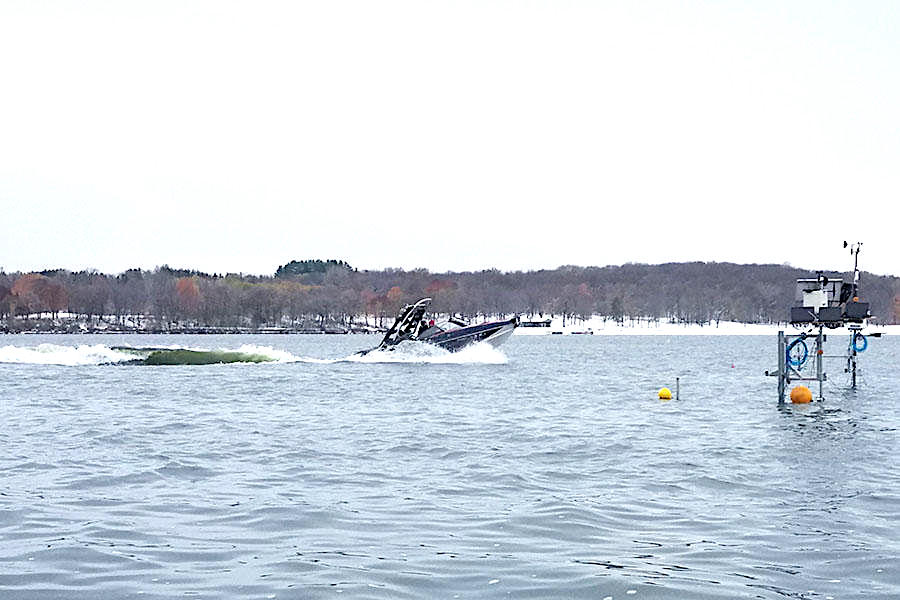Lake bottoms suffer when wakesurf boats rev up, study finds

Submitted Photo In recent years, researchers from the University of Minnesota St. Anthony Falls Laboratory have been looking at lake impacts from wakesufing boats. Photo courtesy Healthy Waters Initiative, University of Minnesota.
Boat dealers in North Dakota sell wakesurfing watercraft, as its popularity spreads. But before you buy one of these power boats, a regional study suggests careful operation to protect the health of lakes.
Wakesurfing appears to be perfect summer fun that can be taken up by most age groups. It involves riding a surfboard behind a boat, and being pulled along by the wake.
But because of the powerful waves created, conservationists worry about the possibility of shoreline erosion.
The University of Minnesota’s Saint Anthony Falls Lab has been studying this, and lab Researcher Andy Riesgraf said in certain situations, their new findings show significant disturbance to the lake bottom.
“There’s processes at the lake bed where nutrients are involved,” said Riesgraf, “and if you disturb those sediments, it could release nutrients that are now available for things like algal growth.”
And force from the boat kicking up cloudy sediment can make it hard for fish to see, disrupting their search for food. The worst impact was recorded at depths of 9 and 14 feet, when the boats are at high speed.
Study authors aren’t taking sides, but they say surf mode should only be used when the water depth is at least 20 feet. The boating industry has disputed the growing body of research.
In 2022, Saint Anthony Lab issued the first phase of this study. That data indicated wakesurf boats require a distance of at least 500 feet from shore to minimize the potential for environmental harms.
Industry voices say that’s too extreme.
Whether or not states adopt new restrictions, Riesgraf said he hopes boat operators keep these findings in mind.
“Just having people be aware that there are impacts,” said Riesgraf, “and trying to make, you know, conscious decisions of what depth to operate the boat.”
Next up, he said, lab officials are looking at the difference between wind-driven waves and the ones generated by powerboats, in hopes of providing clarity about another sticking point in this debate.
Those results could be ready by next summer.





